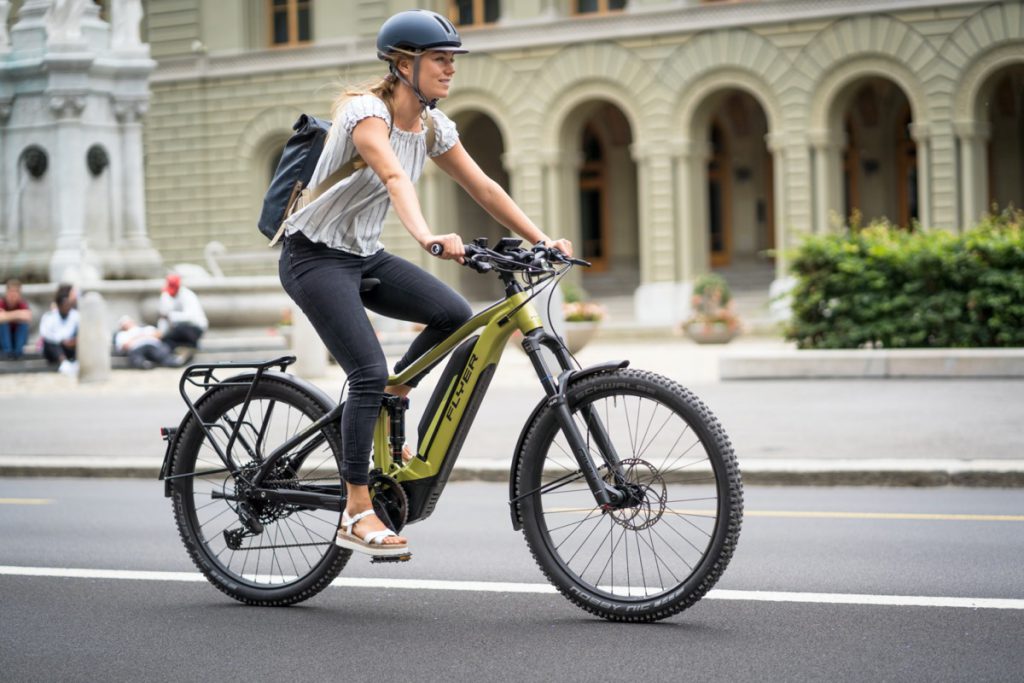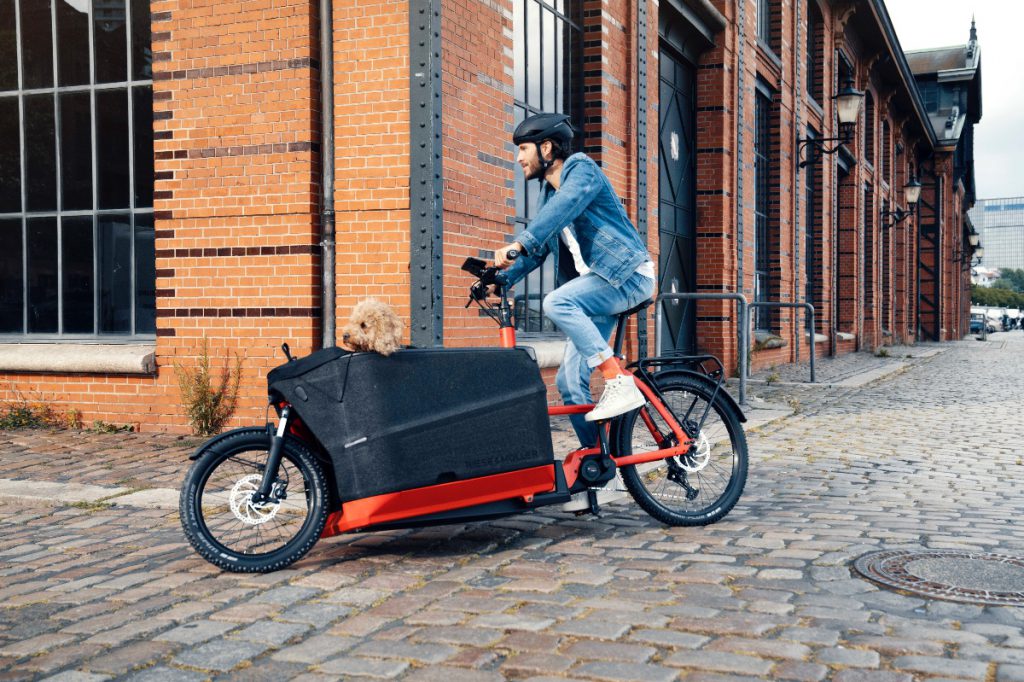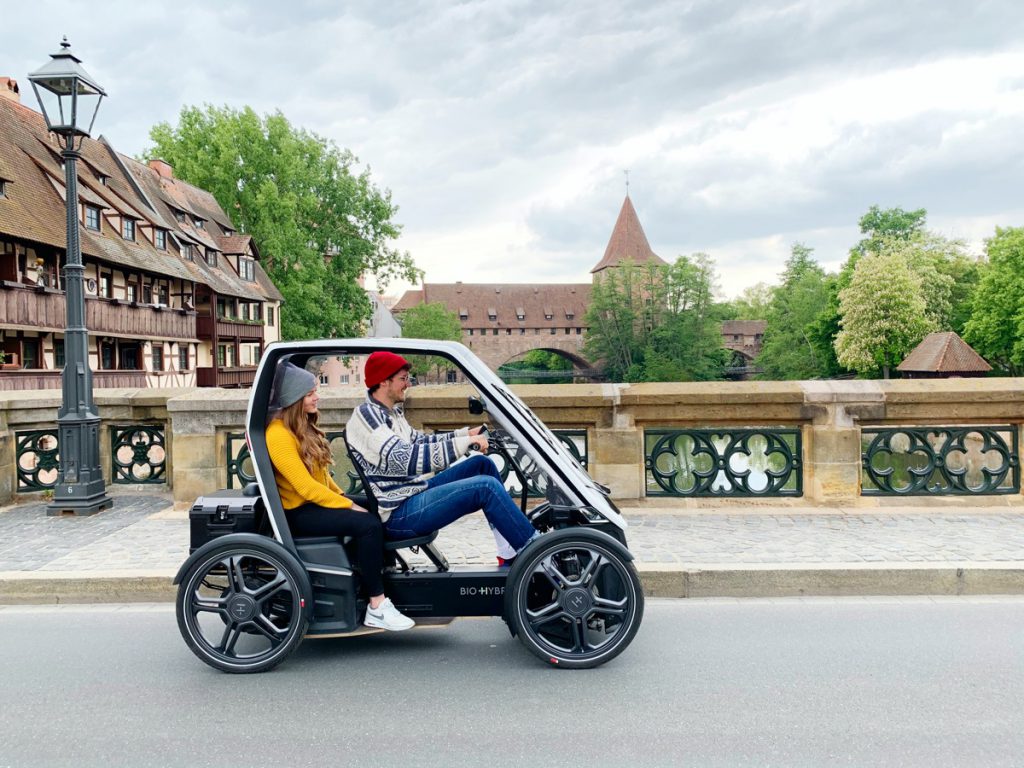At first glance, the matter seems clear: those who move a bicycle or use public transport exclusively with their own muscle power contribute to environmental relief, whereas e-bikers cause an increase in emissions.
Negative environmental impacts
The production of batteries for pedelecs requires precious raw materials that are often extracted under inhumane and exploitative conditions. The fact that for decades this hardly seemed to bother anyone, for example with regard to batteries for billions and billions of laptops or mobile phones, does not make matters any better. Then there is the energy input for the production of the power storage units, which contributes significantly to the fact that about 80 percent of the CO2 emissions in the life cycle of e-bikes already occur before they are ridden. And finally, electricity is also consumed to operate the electric bikes.
However, the matter is not that simple, even if the negative environmental impacts, especially in the production of e-bikes, cannot be dismissed out of hand. Of course, the aforementioned problems must be addressed, for example by manufacturers taking a closer look at their supply chains and paying more attention in future to the sources from which the raw materials come or the working and environmental conditions under which work is done, especially in the supplier countries. There must also be more investment in improved recycling processes in the future.
The good side of the coin
Especially on routes of up to 15 kilometres, many car journeys can be replaced by pedelecs, thus relieving the environment as well as car traffic. Users of electric bikes cover longer distances on their way to work than cyclists. This is a clear indication of the higher substitution potential of car journeys by bikes with built-in tailwind. In concrete terms: Anyone who is considering switching from a car to a two-wheeler, at least partially, for example when the weather is nice, will find the decision easier if he/she can use an e-bike.

The German Institute of Urban Affairs (Difu) puts the ratio of the energy balance between e-bike and car at 1:30, other calculations based on higher basic assumptions regarding the range of the pedelec and the size of the car even come to 115 times the CO2 emissions of the car.
The climate impact of pedelecs is also about 5 times lower than that of a scooter with an internal combustion engine and, surprisingly, even lower than the use of public transport. This is despite the fact that these calculations include not only the energy used for driving, but also for production, maintenance and disposal.
E-bike instead of car rides
The Institute for Energy and Environmental Research (ifeu) provides interesting findings in its study „Pedelection – Verlagerungs- und Klimaeffekte durch Pedelec-Nutzung im Individualverkehr“.
Qualitative interviews revealed that many people appreciate being more connected to the outside world again through the e-bike. Exercise in the fresh air instead of isolation in the car was a frequently mentioned argument for the switch. Commuters in particular enjoy the time before and after work. Last but not least, the aspect that one can usually get around faster on a pedelec than in a car stuck in a traffic jam, especially during rush hour, probably also plays a role for some.
The findings described are also supported by figures. Thus, 45 percent of the pedelec kilometres were previously covered by car, 32 percent by bicycle, 7 percent by public transport and 10 percent not at all. Among commuters, the substitution of the car was even noticeably higher at 62 percent compared to the substitution of the bicycle at 18 percent. Conclusion: E-bikes are predominantly used instead of means of transport with higher emissions. The study did not only take into account the distances travelled, the production, operating and disposal costs, but also weather conditions, travel distance, age, gender and occupation of the e-bikers.
Effects of the changeover
The shift effects shown in the IFEU study could save approx. 1.1 to 1.5 million tonnes of CO² annually by 2030. The increasing reduction in nitrogen oxide emissions as a result of the switch also has a positive impact, which benefits residents living near busy car roads in particular. Further substitution effects are to be expected as a result of the increased use of cargo pedelecs for urban goods transport or for carrying children, which is additionally promoted by attractive subsidy programmes. It is not for nothing that the slogan „I replace a car“ can be read on some cargo e-bikes.

According to the Federal Environment Agency, the production of a pedelec battery causes between 55 and 75 kg of CO² emissions per kilowatt hour. If the electric bike replaces a car, the emissions are paid off after 165 kilometres cycled instead of driven. Of course, the production of the battery is offset even faster if the electricity comes from renewable energy sources.
Even if we assume that half of all bicycles have an electric motor and that they are used to travel twice as far as purely muscle-powered bicycles, the additional electricity consumption would not even amount to one thousandth of Germany’s annual electricity consumption.
Overall, the study concludes that the use of pedelecs contributes to sustainability, in particular due to their high substitution potential of car trips.
French Mobility Revolution
As the magazine „Vision Mobility“ recently reported, in France the scrapping premium for old cars of up to 2,500 euros will in future also apply to the replacement purchase of pedelecs or cargo bikes. This is impressive proof of how high the chances of replacing an essential number of car journeys through the use of electric bicycles and thus reducing exhaust and noise emissions are now also assessed in politics.
For the first time, old cars in the neighbouring country are to be exchanged not only for a new, more environmentally friendly car, but also optionally for an e-bike. The government thus decided on a hitherto unique form of scrapping bonus that makes it possible to replace old cars with new e-bikes. The magazine quotes the Minister of Transport (!) Barbara Pompili with her remarkable statement:
“For decades, we have put shopping centres in the middle of greenfield sites. We have created air connections to hold meetings two hours by train from Paris. We have allowed cars to pollute our lungs in the inner cities (…) All this is absurd, it must stop.”
Not only e-bikes with two wheels, but with any number of wheels are to be promoted. This could also promote the purchase of cargo bikes.

Links:
Study by the IFEU Institute: https://www.ifeu.de/projekt/pedelection/
Magazine article „Vision Mobility“:
Text: Peter Grett
Pictures from above: R Raymon, Biketec, Riese+Müller, BioHybrid
Note by the author:
I am aware that there is an essential difference between e-bikes and pedelecs in the legal classification. The vast majority of electric bicycles in Germany are pedelecs whose motor drive is coupled to the use of muscle power. However, since the use of the word „e-bikes“ has now become established as a collective term for all bicycles with electric drive, we also use this term in order to avoid confusion. Although strictly speaking these are usually pedelecs, we usually write of „e-bikess“, but occasionally – to avoid linguistic monotony – of „pedelecss“.



